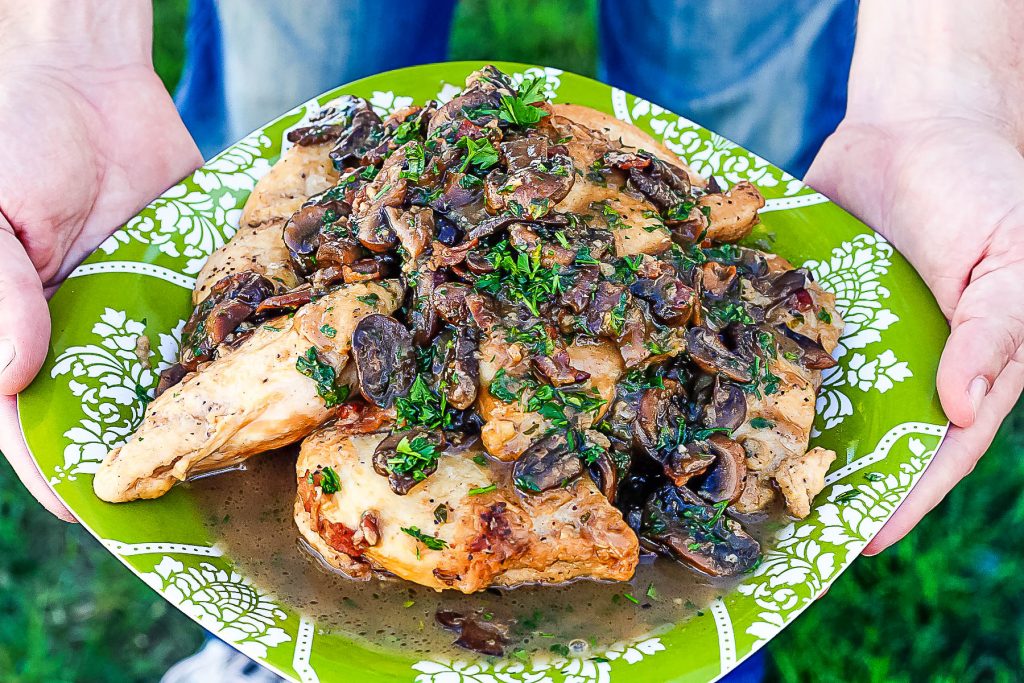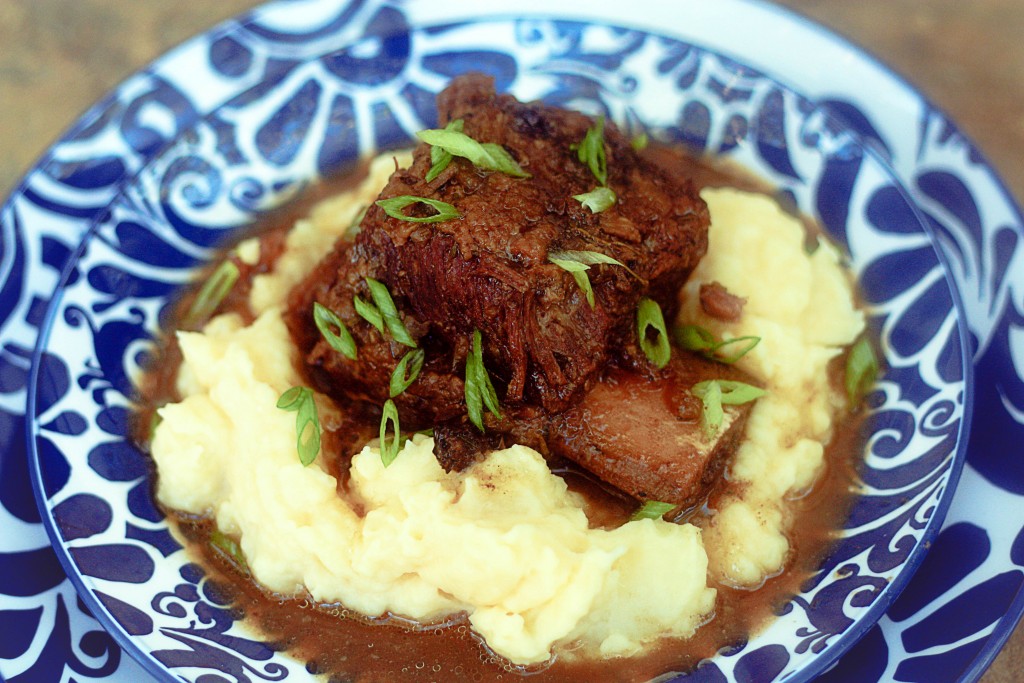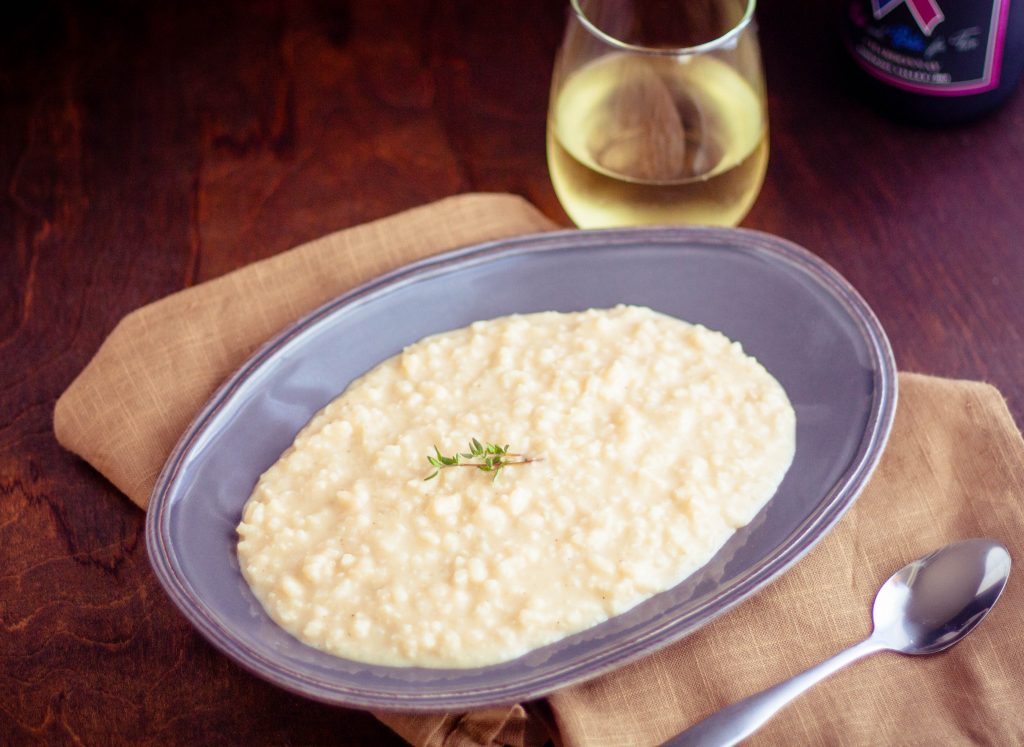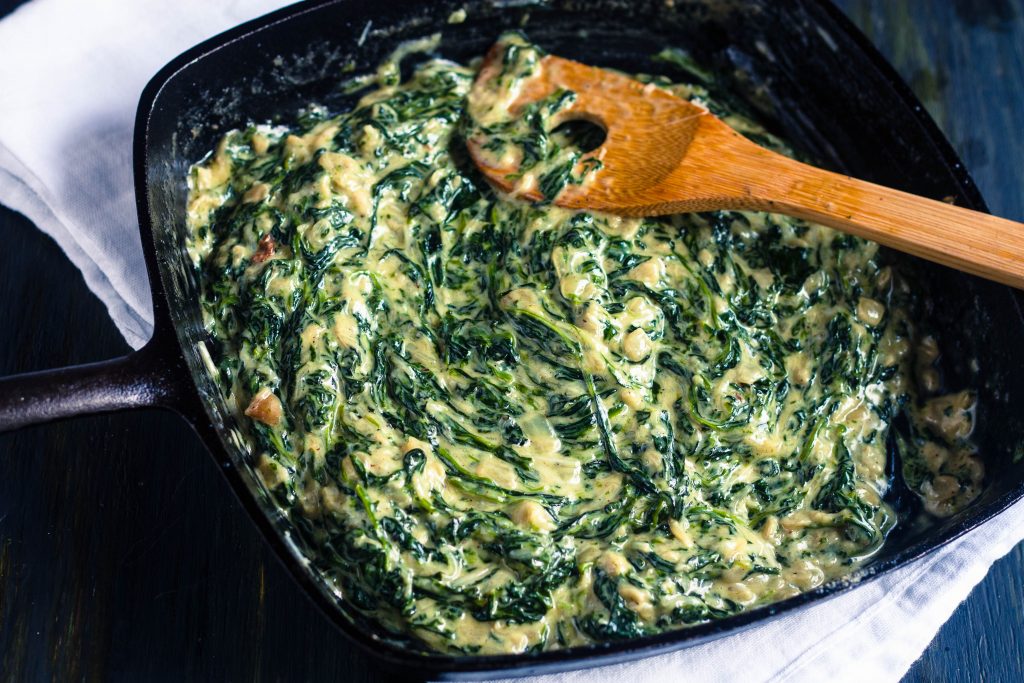
Nothing says “special occasion” like a beautifully roasted Cornish hen. Whether it’s an anniversary dinner, Valentine’s Day, or a cozy dinner party at home, this dish feels both indulgent and effortlessly elegant. There’s just something about having your own perfectly portioned, golden-brown bird sitting on your plate, surrounded by roasted Brussels sprouts and sweet potatoes, that makes an ordinary night feel like a celebration.
Cornish game hens are an excellent choice when you want to impress without the stress. They cook faster than a regular whole chicken, stay incredibly juicy, and develop the kind of crispy, herby skin that feels straight out of a fine-dining restaurant. Pair them with a glass of crisp white wine, maybe a slice of lemon on the side, and suddenly, your kitchen transforms into a five-star dining experience—no reservations required.
This recipe delivers bold, savory flavors with minimal effort, making it perfect for any special occasion where you want to savor good food, great company, and maybe just a little extra romance.

Why You’ll Love This Recipe
- Perfectly seasoned: A fragrant blend of garlic powder, rosemary, thyme, and Cavender’s Greek seasoning gives these hens an herby, savory depth of flavor.
- Crispy, golden-brown skin: Roasting at high temperatures locks in moisture while achieving that crave-worthy, crispy skin.
- Elegant yet easy: Fancy enough for a holiday dinner, yet simple enough to make on a weeknight.
- Quick roasting time: Cornish hens cook much faster than a whole bird—dinner is on the table in just about an hour.
- Versatile pairings: Serve with green beans, mashed potatoes, or a wild rice pilaf for a complete meal.
What Are Cornish Hens?
Cornish game hens may sound like some wild, elusive bird you’d have to track down in the English countryside, but in reality, they’re a uniquely American creation—one that’s been gracing dinner tables since the 1950s.
These petite birds are actually a crossbreed, developed by a savvy couple named Alphonsine and Jacques Makowsky, who were looking to create a small, tender, and fast-cooking alternative to traditional chickens. The result? A plump, single-serving bird that had all the richness of a whole roasted chicken but none of the long baking time or carving hassle.
Despite the “game” in their name, Cornish hens have never actually been game birds. They’re simply young chickens, typically processed at around four to five weeks old, before they have time to grow into the full-sized roasters you’d find in your typical grocery store. Their small size makes them perfect for individual portions, giving every diner their own crispy-skinned, juicy bird without the need for carving knives or a giant roasting pan.
These little hens skyrocketed in popularity during the mid-20th century, thanks in part to their elegant presentation. They quickly became a staple on fine dining menus and at upscale dinner parties, where hosts could serve them as a “luxury” alternative to standard poultry.
By the 1970s and 80s, Cornish hens had also become a favorite for holiday meals—especially for small gatherings where a full turkey or large roast would’ve been overkill.
Whether it’s a holiday season feast, a special date night, or just a Tuesday when you want to cook something extra special, these little hens prove that great things really do come in small packages.
Essential Equipment
- Large roasting pan – Ensures even cooking and catches flavorful pan drippings.
- Basting brush – Helps evenly coat the hens with the herb and basting sauce mixture.
- Instant read thermometer – Crucial for checking the internal temperature without guesswork.
- Kitchen twine – Optional but helps keep the wings and legs neatly tucked.
Ingredients You’ll Need
For the Hens & Vegetables
- Cornish chickens – Look for fresh or frozen (thawed) hens in the frozen section of most grocery stores.
- Carrots, onions, celery – These add depth of flavor and caramelize beautifully.
- Garlic cloves – Both smashed and minced for double the flavor.
For the Seasoning Blend
- Fresh rosemary sprigs and thyme – Earthy and aromatic, these herbs infuse the hens with flavor.
- Lemon wedges – Adds a bright citrusy balance to the rich roasted meat.
- Cavender’s Greek Seasoning – A perfect all-in-one seasoning blend with salt, garlic, and herbs.
- Extra virgin olive oil – Helps the seasonings adhere and crisps the skin.
How to Make Roasted Cornish Hens
1. Prep the Oven & Ingredients
- Preheat your oven to 425°F.
- Pat the hens dry inside and out using paper towels—this helps ensure crispy skin.


2. Season the Vegetables
- Toss the carrots, onions, celery, and smashed garlic cloves with half of the olive oil and seasoning mixture.
- Spread the vegetables evenly in a large roasting pan.



3. Season the Hens
- Mix the remaining olive oil with garlic powder, lemon zest, thyme, rosemary, Cavender’s seasoning, and black pepper.
- Rub this mixture all over the hens, including inside the cavity of each hen.
- Tuck the wings behind each bird to prevent burning.


4. Roast the Hens
- Place the hens on top of the vegetables in the roasting pan.
- Roast for 50-60 minutes, or until the thickest part of the thigh reaches 163-165°F.
5. Rest & Serve
Cut in half or serve whole with roasted vegetables and pan juices.
Let the hens rest for 5 minutes before serving.
This post may contain affiliate links. I may receive commissions for purchases made through links in this post.
Visit my Amazon Store for everything you need to cook up a storm, bake delicious treats, and whip up your favorite beverages!
Chef Secrets & Tips: Making the Best Roasted Cornish Hens
Cooking Cornish hens might seem like a straightforward affair—season, roast, serve—but there are a few insider tricks that will take them from “good” to “so incredible your dinner guests will think you went to culinary school.” Here’s everything you need to know to get the juiciest meat, crispiest skin, and most flavor-packed roasted hens every single time.
1. Dry the Skin for Maximum Crispiness
Moisture is the enemy of crispy skin, so before you even think about seasoning, make sure those hens are bone-dry. After patting them down with paper towels, let them sit uncovered in the fridge for at least an hour (or up to 24 hours) before roasting. This helps the skin dehydrate slightly, which means it’ll crisp up beautifully in the oven. If you’re short on time, at least give them a good 10-minute air-dry on the counter while you prep everything else.
2. Don’t Skip the High Heat Start
Cornish hens have delicate skin and tender meat, so they don’t need the long, slow roasting time of a whole chicken. Starting at 425°F ensures the skin crisps up while locking in moisture. If you want extra insurance, you can blast them at 450°F for the first 10 minutes before dropping the temp back down to 425°F. This gives you the best of both worlds—deep golden skin and ultra-juicy meat.
3. Season Generously—Inside & Out
Here’s where most home cooks go wrong: They only season the outside. Sure, that gives you a flavorful crust, but if you want every single bite to be packed with flavor, don’t neglect the cavity. Stuffing a few sprigs of fresh herbs, smashed garlic cloves, or even a slice of lemon inside each hen infuses the meat from the inside out. And when it comes to salt? Don’t be shy. A light hand won’t cut it here—these birds need a good coating of seasoning to bring out their best flavor.
4. The Secret to Ultra-Juicy Meat? Resting Time
I know, I know—when those beautifully roasted hens come out of the oven, it takes some serious willpower not to dive right in. But letting them rest for at least 5-10 minutes before cutting allows the juices to redistribute. Skip this step, and all those flavorful juices will run straight onto your cutting board instead of staying where they belong—in the meat.
5. Use an Instant-Read Thermometer for Foolproof Cooking
Cornish hens may be small, but they cook fast—and that means they can go from juicy perfection to dry disappointment in a matter of minutes. An instant-read thermometer is your best friend here. Stick it into the thickest part of the breast and pull the hens from the oven at 163-165°F. Remember, the internal temp will continue to rise slightly as they rest.
6. Get That Restaurant-Quality Browning
Ever wonder why restaurant-roasted meats have that deeply golden, magazine-cover-worthy skin? It’s because chefs know how to layer their cooking techniques. If your hens are looking a little pale toward the end of roasting, switch the oven to broil for 2-3 minutes to develop even deeper browning. Keep a close eye on them—this isn’t the time to walk away!
7. Don’t Waste Those Pan Drippings!
All that rendered fat and caramelized goodness in the bottom of your roasting pan? That’s liquid gold. Pour those drippings over the hens before serving, or better yet—whisk them with a splash of lemon juice or white wine for an easy, no-fuss pan sauce. If you really want to impress, toss your side veggies in those drippings before serving for an extra punch of flavor.
8. Elevate the Flavor with a Last-Minute Baste
For an extra layer of richness, brush the hens with melted butter mixed with a little garlic and lemon juice about 10 minutes before they’re done. This gives them a glossy, flavorful finish and an added boost of flavor that makes a world of difference.
9. The One Step That Makes a Huge Difference: Trussing
You don’t have to tie up your hens like a Thanksgiving turkey, but a little kitchen twine goes a long way. Tucking the wings behind the back and tying the legs together helps the hens cook more evenly and keeps the meat extra juicy. It also prevents the tips of the wings from burning—a win-win.
Commonly Asked Questions
1. How many Cornish hens should I serve per person?
Cornish hens are small, typically weighing around 1 to 2 pounds each. For a generous portion, serve one hen per person, especially for special occasions. If you're pairing them with hearty side dishes, half a hen per person can be plenty.
2. Can I prepare Cornish hens ahead of time?
Absolutely! You can season the hens up to 24 hours in advance and store them uncovered in the refrigerator. This not only allows the flavors to deepen but also helps dry out the skin, making it even crispier when roasted. Just let them sit at room temperature for about 20 minutes before roasting.
3. What’s the best way to check if my Cornish hens are done?
The most reliable way is to use an instant-read meat thermometer. Insert it into the thickest part of the thigh (without touching bone). The internal temperature should be at least 165°F. If you don’t have a thermometer, check if the juices run clear when you pierce the thigh—if they’re still pink, the hens need more time.
4. Can I roast Cornish hens from frozen?
It's best to thaw them completely before roasting for even cooking. If you’re in a pinch, you can roast from frozen, but you’ll need to increase the cooking time by about 50% and check for doneness with a meat thermometer.
5. What’s the best way to get ultra-crispy skin?
Start by thoroughly patting the hens dry and letting them air-dry in the fridge for a few hours. Roast at high heat (425°F to 450°F), and for an extra boost, broil them for 2-3 minutes at the end of roasting. Brushing with melted butter during the last 10 minutes also adds crispness and color.
Storage & Reheating Tips
How to Store Leftovers:
- Refrigeration: Let the hens cool to room temperature, then store them in an airtight container or tightly wrap them in foil. They’ll stay fresh in the fridge for up to 3 days.
- Freezing: If you want to keep them longer, wrap the hens in plastic wrap and then foil, or store them in a freezer-safe airtight container. They’ll keep well for up to 2 months.
How to Reheat Without Drying Them Out:
- Oven Method (Best for Keeping Skin Crispy)
- Preheat the oven to 325°F.
- Place the hens in a baking dish with a splash of chicken broth or pan drippings to keep them moist.
- Cover loosely with foil and reheat for 15-20 minutes, then uncover and broil for 2-3 minutes to re-crisp the skin.
- Air Fryer Method (Quick & Crispy)
- Set the air fryer to 350°F.
- Reheat for 5-7 minutes, flipping halfway through for even crispiness.
- Microwave Method (Quick, But Best for Deboned Meat)
- If reheating just the meat (not the whole hen), place it on a microwave-safe plate with a damp paper towel to prevent drying out.
- Microwave in 30-second intervals until heated through.
Roasted Cornish hens are a simple yet show-stopping dinner recipe that brings warmth and elegance to any table. Whether it’s a holiday feast, a romantic date night, or a dinner party with friends, this recipe delivers juicy, flavorful hens with perfectly crisp skin every time. So go ahead—pour yourself a glass of wine, gather your favorite people, and enjoy a meal that feels like a celebration, no matter the occasion.

More Dinner Party Worthy Dishes
If you love the elegance and flavor of roasted Cornish hens, why stop there? Elevate your next dinner party with these show-stopping dishes that strike the perfect balance between impressive and approachable.

Marry Me Salmon – A rich and creamy dish featuring perfectly seared salmon bathed in a sun-dried tomato and Parmesan sauce. It’s so good, it just might lead to a proposal!

Chicken Marsala – Tender chicken cutlets simmered in a savory Marsala wine and mushroom sauce. It’s an Italian classic that never fails to impress.

Braised Beef Short Ribs – Slow-cooked to perfection, these short ribs melt in your mouth, coated in a deeply flavorful red wine reduction. Serve over mashed potatoes for the ultimate comfort meal.

Classic Risotto – Creamy, dreamy, and luxuriously rich, this dish is a labor of love that pays off with every perfectly cooked bite. A perfect side for roasted meats or seafood.

Creamed Spinach – Silky, cheesy, and loaded with garlic, this steakhouse favorite is the ultimate side dish for any special occasion meal.

Green Bean Bundles – Crisp, vibrant green beans wrapped in smoky bacon and glazed with a touch of brown sugar for the perfect sweet-savory balance. Elegant, easy, and downright addictive.

Before You Get Started! If you whip up this recipe, I’d love to hear what you think! Leave a review and rating to let me know how it turned out. Your feedback helps keep the kitchen running and allows me to keep sharing free recipes with y’all!
Roasted Cornish Hens
Equipment
- Kitchen Twine optional
Ingredients
Cornish Hens & Vegetables:
Seasoning Mixture:
- 4 cloves garlic minced
- 2 tablespoons fresh thyme leaves minced
- 2 teaspoons fresh rosemary leaves minced
- 2 tablespoons fresh lemon zest
- ⅔ cup olive oil
- 2 tablespoons Cavender's Greek Seasoning
- 1 teaspoon freshly cracked black pepper
Instructions
Preheat the Oven & Prep the Hens
- Preheat the oven to 425°F.
- Pat the Cornish hens dry, inside and out, using paper towels. Set aside.
Prepare the Vegetables
Make the Seasoning Mixture
- In a medium-sized bowl, whisk together minced garlic, lemon zest, rosemary, thyme, Cavender’s Greek Seasoning, black pepper, and olive oil until well combined.
Season the Vegetables
- Pour half of the seasoning mixture over the vegetables and toss until evenly coated.
Assemble the Roasting Pan
- Spread the seasoned vegetables evenly in a large roasting pan.
Season the Hens
- Brush the remaining oil mixture evenly over the Cornish hens, coating all sides and the inside cavity.
- Place the hens on top of the vegetables in the roasting pan.
- Tuck the wings behind the hens to prevent burning.
Roast the Hens
- Place the roasting pan on a lower oven rack and roast for 50-60 minutes, or until the thickest part of the breast reaches 163°F to 165°F.
Rest & Serve
- Remove the hens from the oven and let them rest for 5 minutes.
- Cut each hen in half and serve with the roasted vegetables.
Notes
- Cavender’s Greek Seasoning: Substitute with a mix of 1 teaspoon salt, ½ teaspoon garlic powder, ½ teaspoon onion powder, ½ teaspoon dried oregano, and ¼ teaspoon paprika.
- Fresh herbs: Use 1 teaspoon dried thyme and ½ teaspoon dried rosemary instead of fresh.
- Olive oil: Swap with melted butter for a richer flavor.
Nutrition
*Nutrition information is automatically calculated based on ingredient data and should be considered an estimate. When multiple ingredient options are provided, the first listed is used for calculation. Optional ingredients and garnishes are not included in the nutrition analysis.
Did you make this recipe? Tag @jennifercooks123 on Instagram and hashtag it #jennifercooks so we can see all the deliciousness!


Leave a Reply